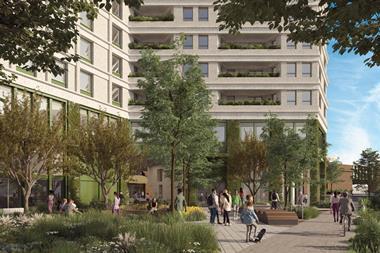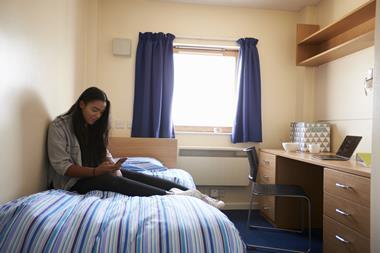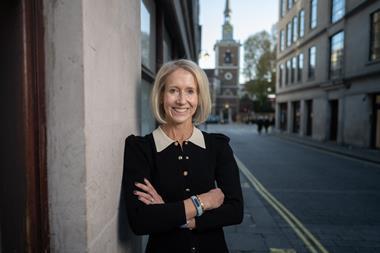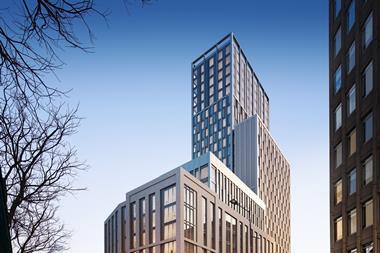At the start of 2022, the Bank of England base rate was 0.25%, inflation stood at just 5.5% and Matt Hancock was merely a former health secretary in the wilderness of the back benches.

The somewhat chaotic 11 months that followed have seen a ‘mini’-budget that was anything but small, three prime ministers, four chancellors, and Matt Hancock packed off down under to the jungle to prove that “politicians are human”.
The macroeconomic picture has also darkened considerably since January.
The Bank of England has jacked the base rate up to 3% in an attempt to bring inflation back down from its double digit highs, while Jeremy Hunt’s ‘fiscal statement’ saw further cuts to government spending.
However, despite tricky economic headwinds, “demand for student accommodation continues to rise and the fundamentals remain intact, making it an attractive prospect for investors,” says Lorna Brown, CEO of Birchwood Capital, a specialist real estate lender.
According to Cushman and Wakefield, the 2021/22 academic year saw the delivery of 24,612 student beds, with 17,000 new beds being delivered for 2022/23. The same report estimates that 1.63 million students now require a bed space while studying, while 697,734 beds were available to students in 2021/22.
“High demand from domestic and international students for places at the UK’s world-leading universities has placed increased strain on an already under-supplied sector, pushing more students into houses of multiple occupation (HMOs), thereby taking homes out of the overall housing supply. Delivering more purpose-built student housing supplies high-quality homes for students, and helps to alleviate the pressure on the private rented sector,” explains Jay Ahluwalia, principal at Dominvs Group, a real estate developer and investor.
With UCAS reporting that 683,650 students applied to university for 2022/23 - which would take up almost all of the beds available to students - the supply-demand imbalance for accommodation seems likely to continue for some time. This year has seen students in Manchester being offered halls in Liverpool and students in Durham queuing overnight in a desperate attempt to secure a place to live for the following academic year.
While the Bank of England has predicted a recession lasting until mid-2024, Brown argues “demand for higher education will not slow, and in the face of these macroeconomic headwinds it is likely to rise”. Studies suggest that economic downturns lead to an uptick in student numbers as limited job opportunities inspire more people to upskill to remain competitive.
The student accommodation sector’s strong underlying fundamentals have led to continued inflows of institutional capital and some record deals in 2022.
March saw Dominvs Group secure consent for a 713-bed scheme in Hammersmith that was then forward funded with Scape for over £173 million - a record for UK purpose-built student accommodation (PBSA).
This was followed in May by the estimated £3.3 billion purchase of Student Roost from Brookfield by a joint venture between GIC, the Singaporean sovereign wealth fund, and residential giant Greystar. At the time of the sale, Student Roost had 21,000 beds spread across 59 assets.
June saw Unite Students promoted from the FTSE250 to the FTSE100 and its latest interim statement revealed Unite was confident of achieving occupancy of 97% and rental growth of 3.5-4% for 2022/23.
This is not to say the sector has not had its challenges to deal with.
Developers have had to weather labour shortages, build cost inflation and supply chain delays. Meanwhile operators offering an all-inclusive package that rolls rent and bills into one flat fee - common practice across the sector - will have seen higher energy bills eating into their profit margins.
Against the backdrop of rising energy prices, energy efficiency - and sustainability more broadly - will continue to be a priority for the sector.
Sadie Malim, head of ESG, special projects & legal at investment manager Moorfield, which helped pioneer student accommodation as an asset class, says “Sustainability is a central pillar of our investment strategy in PBSA, with some assets over 60% more energy efficient than typical stock in the sector.”
“Institutional capital will continue its drive to a sector that must deliver new and green supply to meet demand, as well upgrade much of the legacy stock which risks becoming stranded,” she adds.
Cushman & Wakefield puts the number of un-refurbished legacy stock at 175,910 units.
While rain clouds will still be expected in 2023, the counter-cyclical nature of student housing seems likely to be resilient enough to shine through - largely due to the significant under-supply of student beds.

To hear more on the outlook for UK student housing, BOOK NOW to attend the Property Week Student Accommodation conference.
Expert panels will cover topics as diverse as sustainability, investment trends and customer targeting strategies for international students.





























No comments yet